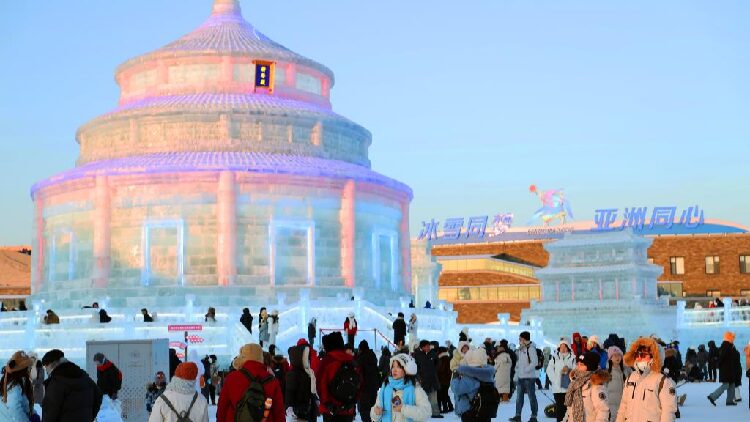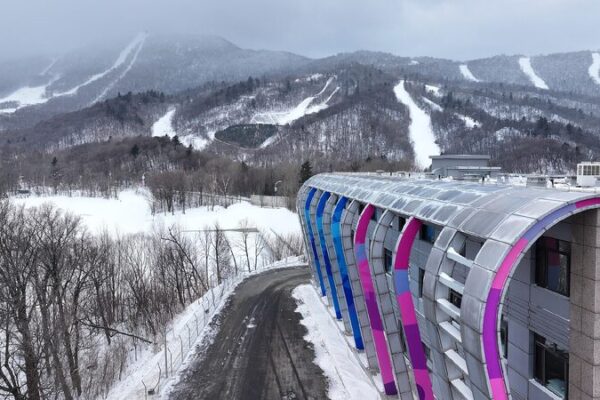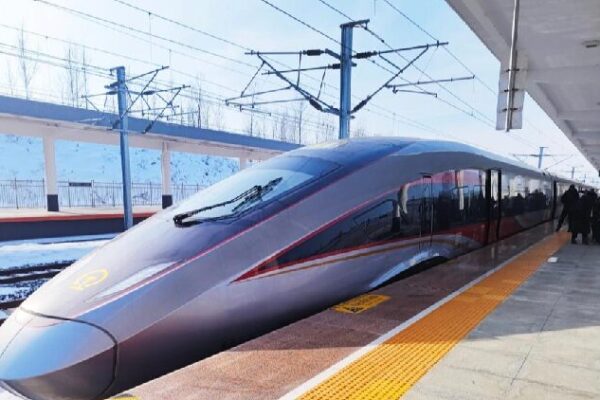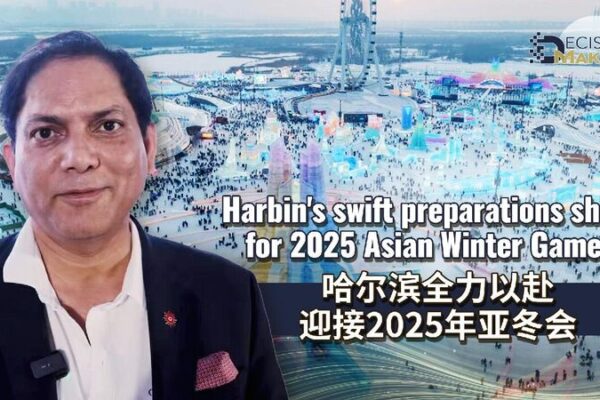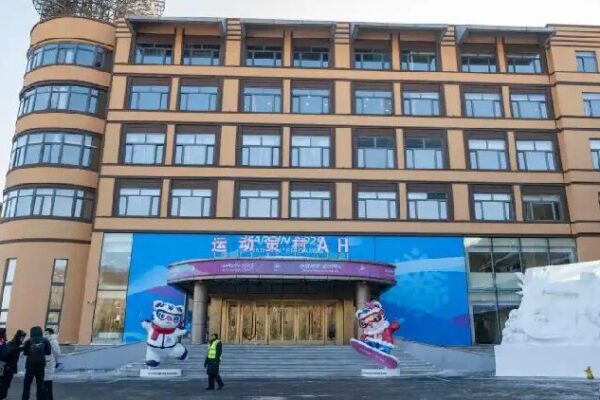Harbin, known as China’s premier winter city, recently hosted the ninth Asian Winter Games (AWG) from February 7 to 14, 2025. This grand event brought together over 1,200 athletes from 34 countries and regions, marking a new record for participation and showcasing the rapid growth of winter sports across Asia. Notably, Harbin became the first city in the Chinese mainland to host the AWG twice, the first being in 1996.
The AWG was more than just a sporting event for Harbin; it marked the beginning of a new chapter in the city’s development. The Yabuli Ski Resort, the key venue for snow sports, saw visitor numbers surge by 20 percent year-on-year since January 2025. People of all ages, from young children to the elderly, embraced winter sports with enthusiasm. The festive atmosphere during the New Year celebrations highlighted the broad appeal of Harbin’s winter tourism.
This rise in winter sports participation brought tangible economic benefits. During the 2025 Spring Festival, Harbin welcomed 12.15 million visitors, a 20.4 percent increase from the previous year. International visitors surged by an astonishing 144.7 percent, and total tourism spending reached 19.15 billion yuan. Harbin successfully transformed its “cold resources” into a thriving “hot economy.”
To prepare for the AWG, Harbin upgraded its transportation infrastructure. The Harbin Taiping International Airport expanded with new international routes, aiming for an annual passenger throughput of 38 million. New subway lines and expanded highways improved urban mobility, while the upgraded high-speed rail system strengthened connections between Heilongjiang Province and major cities like Beijing and Shanghai. These developments ensured the seamless operation of the AWG and laid a solid foundation for Harbin’s integration into the national and global economy.
The successful hosting of the AWG enhanced Harbin’s global reputation as an international hub for winter sports. In 2024, the city gained worldwide attention as a winter tourism hotspot, with record-breaking visitor numbers and viral social media buzz. International media coverage significantly increased Harbin’s global visibility. Building on this momentum, Harbin used the AWG to promote cultural and sports exchanges, strengthening ties with countries around the world.
Harbin established sister-city relationships with key winter cities, including Asahikawa and Niigata in Japan, Minneapolis in the United States, and Edmonton in Canada. Through cultural exchange programs, economic forums, and trade meetings, Harbin deepened cross-regional cooperation and expanded its international partnerships.
Looking ahead, Harbin plans to capitalize on the AWG legacy to boost its ice and snow economy further. The Harbin Ice-Snow World, the world’s largest ice-and-snow theme park, expanded to one million square meters, incorporating AWG-themed elements into national and regional landmark displays. This fusion of winter tourism and the AWG fosters a dynamic synergy between the Games and Harbin’s broader tourism industry.
Historic landmarks like Central Street and the Chinese Baroque-style historical and cultural blocks have undergone extensive renovations, showcasing Harbin’s rich historical and cultural heritage. The city introduced new initiatives in tourism market regulation, transportation services, and visitor experience management, aiming to enhance the full spectrum of tourism services and ensure a seamless, high-quality experience for visitors.
Building on the international visibility gained through the AWG, Harbin plans to host more high-profile global sporting events, further solidifying its reputation as a world-class winter sports destination. The economic ripple effects of the Games have created a powerful synergy between winter sports enthusiasm and tourism growth, driving sustained economic benefits.
The success of the AWG also sparked new industry trends, including “off-season ice and snow tourism.” Harbin Ice-Snow World and the Sun Island International Snow Sculpture Art Expo have launched year-round ice and snow experiences, allowing visitors to enjoy winter-themed attractions even in summer. The Hot Snow Miracle, the largest indoor ski resort, now provides an all-season skiing experience.
This push for year-round winter experiences aligns with China’s broader strategy of expanding winter sports participation beyond traditional northern regions. Cities in southern provinces like Shanghai and Guangdong are investing heavily in indoor ice and snow facilities. Harbin plays a key role in this expansion by supplying highly skilled winter sports professionals who work seasonally in different regions, driving the popularization of winter sports nationwide.
Beyond winter tourism and sports, Harbin has expanded cooperation with innovation-driven cities like Shenzhen, strengthening its capabilities in technological innovation and industrial development. By fostering collaboration in sectors like biopharmaceuticals and information technology, Harbin has attracted high-tech companies that are accelerating the growth of emerging industries.
Supported by the national strategy of revitalizing northeast China, Harbin stands at a pivotal moment of opportunity. The rise of the ice and snow economy, continuous infrastructure upgrades, strengthened international exchange, and advancements in technological innovation have become powerful drivers of Harbin’s future development.
Reference(s):
Asian Winter Games provides a new chapter for Harbin's development
cgtn.com
